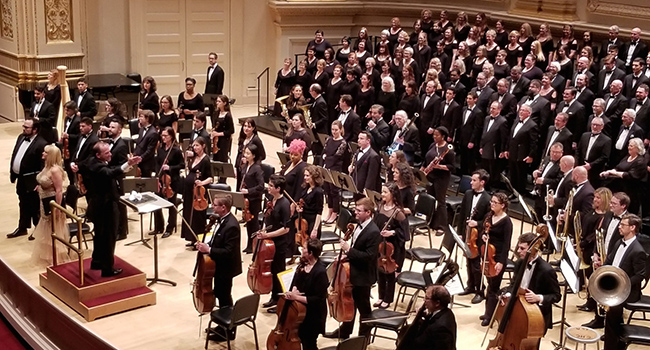Skeptical of what he calls the “anecdotal hysteria” about the dangers of choral singing, Laurier Fagnan points to a high-profile case of infection among members of a Washington State choir in early March, before social distancing and other health precautions became standard practice.
About 87 per cent of those who attended one rehearsal contracted COVID-19 and two of them died.
There were a few other alarming cases, most notably in Berlin and Amsterdam, around the same time. But apart from these few anecdotes, there’s no clear evidence that singing poses a significant danger – at least one that can’t be managed, said Fagnan.
“Thousands of choir practices around the world happened at exactly the same time,” he said. “Three out of several thousand isn’t enough to jump to the conclusion that singing in and of itself is a big danger, especially when we consider that no guidelines as to social distancing or other precautions were in place yet when those cases occurred.”
As president-elect of Choral Canada, Fagnan pointed out there are some 28,000 choirs and 3.5 million choral singers in Canada. “That’s a ton of people who are affected by this.”
He will begin his research with a comprehensive literature review to find out what scientists know so far about transmission through singing, which isn’t much, he said.
He’ll then work with experts in computational fluid dynamics, optical imaging and infectious diseases to measure how far a singer expels infected droplets, particles and aerosol under various conditions.
A specially designed chamber – regulated for pressure and ventilation and equipped with high-speed photography and laser technology – will examine “how droplets are travelling and lingering,” he said.
Fagnan will test both amateur and professional singers, because the latter are trained to produce more acoustic energy with less breath flow. They will include four sopranos, four tenors, four altos and four basses, each singing in different parts of their range, loudly and softly, and in combinations of vowels, consonants and humming.
The singers will also be asked to produce consonants with more turbulent airflow, such as fricatives, sibilants and plosives.
“That will at least give us a preliminary idea of what happens when people sing, and what comes out of the mouth,” said Fagnan.
“In a second stage, we’ll probably put a few more people together, and possibly test with barriers and masks.
“If we find the act of singing doesn’t do all that much (to transmit droplets) then maybe with social distancing, and with proper guidelines already in place – and if they’re respected and even hyped up for choral singing” – it may be possible to resume rehearsals, he added.
Nelson Lee, a U of A infectious disease expert who co-signed a letter to the World Health Organization warning of potential airborne transmission of COVID-19, is also on Fagnan’s research team.
“Based on our understanding of how these droplets and aerosols are generated, it is certainly possible that singing can lead to an increased risk of transmission,” said Lee.
“But in a real-life scenario, there are a lot of factors operating … so it’s really worthwhile to study the act of singing in experimental settings.”
Fagnan stresses that in no way does he want to contradict the advice of public health officials. “We’re only trying to do our part to make sure that the real evidence is presented.”
Fagnan hopes to produce preliminary results in about three months.
| By Geoff McMaster
This article was submitted by the University of Alberta’s online publication Folio, a Troy Media content provider partner.
The views, opinions and positions expressed by columnists and contributors are the author’s alone. They do not inherently or expressly reflect the views, opinions and/or positions of our publication.



